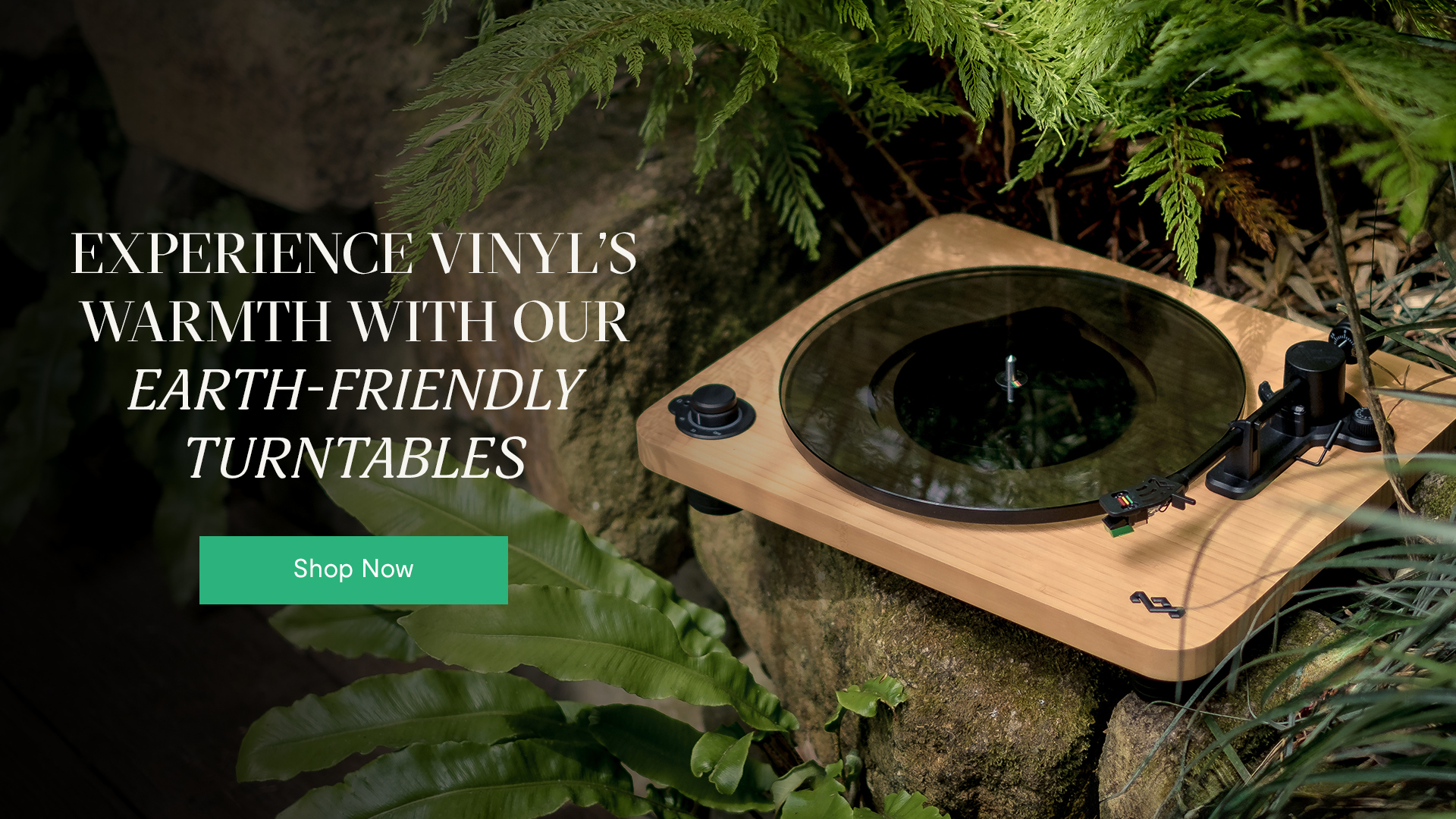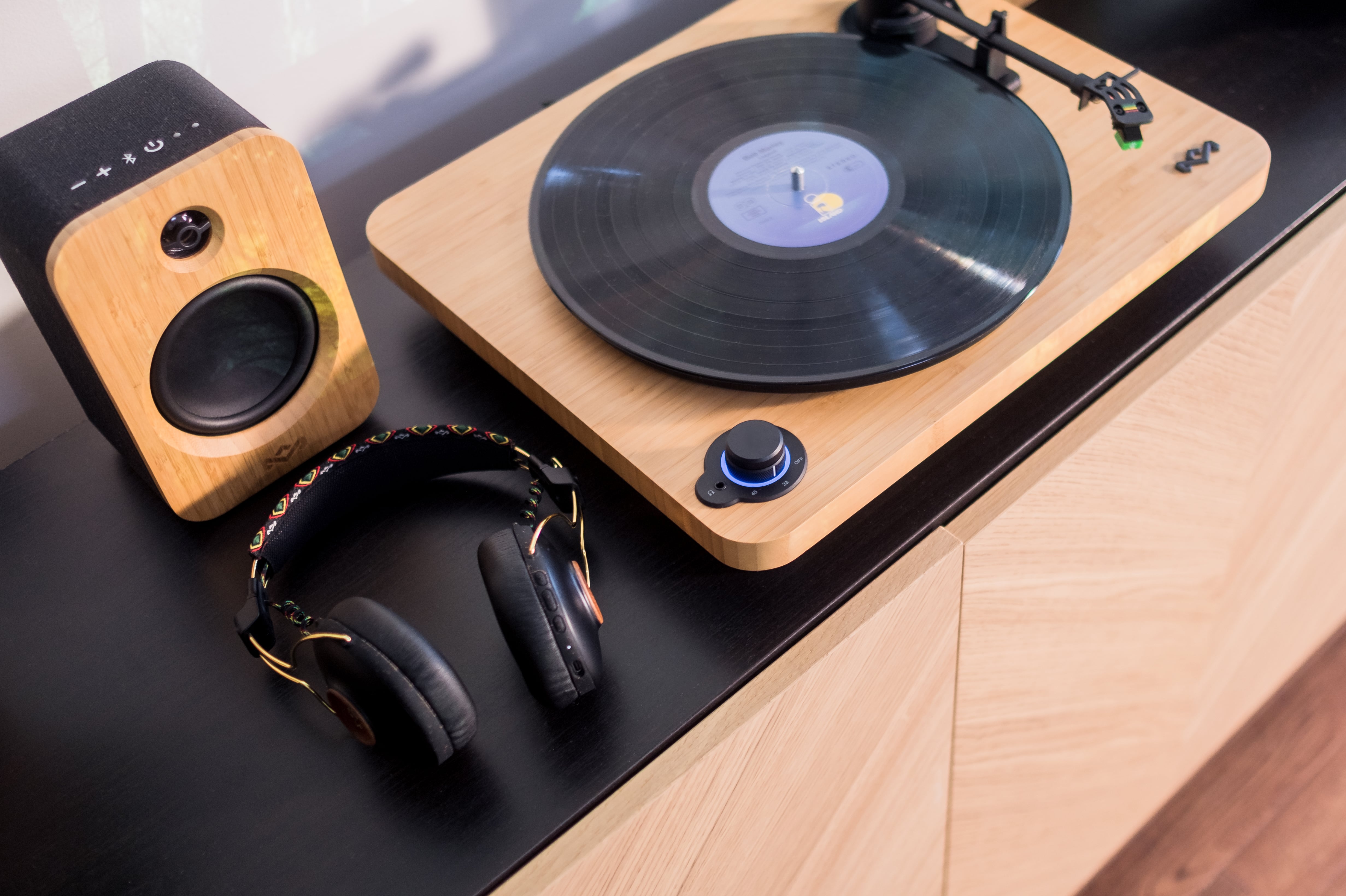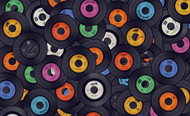9 Types of Vinyl Records to Know
Posted by House of Marley on Jan 11th 2024
Vinyl records, with their rich history and unmistakable charm, have made a remarkable comeback in recent years. Their tactile nature, combined with the distinct warmth of analog sound, has endeared them to both older generations who cherish nostalgia and younger enthusiasts discovering vinyl's magic for the first time. Whether you're a seasoned collector or just starting your vinyl journey, understanding how to start collecting vinyl records is crucial in navigating the intricate world of this beloved medium.
As the vinyl community continues to grow, it's essential to understand the various types of records and the unique qualities each brings to the turntable. Whether you're a seasoned collector or just starting your vinyl journey, this guide will help you navigate the diverse world of vinyl records.

The Resurgence of Vinyl Records
The story of vinyl is one of resilience. Once the primary medium for music lovers worldwide, vinyl faced near extinction with the rise of CDs and digital music. But, like a classic tune, it found its way back into our hearts. Today, vinyl records are not just for nostalgic old-timers; they've found favor with a new generation of music enthusiasts who crave a tangible, authentic music experience. The tactile nature of placing a needle on a record, the large album artwork, and the warm sound quality have all contributed to vinyl's resurgence. Record Store Day, special vinyl releases, and the sheer joy of collecting have further fueled this vinyl revival.
Common Types of Vinyl Records
Each type of vinyl record, from the LP to the 7-inch single, has its unique history and significance. Let's delve deeper into the most common types and understand what sets each of them apart.
12-Inch Albums (LP or Long-playing)
The LP, or "long play," is the backbone of the vinyl world. These 12-inch records, spinning at 33 1/3 RPM, can hold about 22 minutes of music on each side. They revolutionized the music industry by allowing artists to create cohesive, thematic albums. But what about EPs? The "extended play" is somewhat of a middle ground. They're often the same size as LPs but contain more music than a single, yet less than an album, offering listeners a more extended experience than a single but a shorter one than an LP. Skipping record issues, though rare, can sometimes affect these formats, but they're typically easy to resolve.
Extended Play Vinyl Records (EP)
EPs are the unsung heroes of the vinyl family. Typically containing 3-5 tracks, they're perfect for artists to release music without the commitment of a full-length album. For listeners, EPs offer a snapshot of an artist's work, often showcasing versatility and experimentation. They bridge the gap between a single and an album, providing a more extended experience than a single but a shorter one than an LP. They've been instrumental in introducing new artists or giving established ones a platform for experimentation.
7 Inch Singles
The 7-inch single, often spinning at 45 RPM, is a brief musical affair. With just one song on each side, they were the darlings of jukeboxes and radio stations, offering listeners a quick taste of an artist's latest hit. These records have been pivotal in shaping pop culture, often being the medium for chart-topping hits. Their compact nature and affordability made them a favorite among music lovers.
12-inch Singles
These are the lifeblood of the club scene. With extended or remixed versions of songs, they're perfect for dancing. Their wider grooves provide better sound quality, making them a favorite among DJs. These records have played a significant role in the evolution of dance music, giving DJs the flexibility to weave different tracks seamlessly.
10-Inch Records
These records, often spinning at 33 1/3 RPM or sometimes 78 RPM, are a versatile bunch. They've been used for everything from special releases to certain classical music recordings, offering listeners a different experience. Being one of the more unique vinyl record sizes, they’re often the choice for limited edition releases or niche recordings.
Rare Types of Vinyl Records
Do you have valuable vinyl records? While the world of vinyl is vast and varied, some records stand out not just for their musical content, but also for their unique physical characteristics. These rare types of vinyl records are often sought after by collectors and enthusiasts alike, not just for their auditory content, but also for the stories they tell and the history they represent. Let's dive into some of these lesser-known, but equally fascinating, types of vinyl records.
78s (Mostly Shellac Records)
Before the dominance of vinyl, there were 78s. Made mostly of shellac, these records have a rich history, dating back to the early 20th century. Their brittle nature means few have survived in good condition, making them a collector's dream. These records are a window into a bygone era, capturing the sounds and styles of their time. They're a testament to the ever-evolving nature of music recording and consumption.
Flexi Discs
These are the wild cards of the vinyl world. Thin, flexible, and often used for promotional purposes, they've been found in magazines or as bonuses with other records. Their unconventional nature made them perfect for unique marketing campaigns or as collectible novelties. While not known for their longevity or high-fidelity sound, they hold a special place in the hearts of many collectors for their novelty and the innovative ways they were distributed.
Colored Vinyl Records
Who said vinyl has to be black? Colored vinyl records, from translucent hues to vibrant solids, are a visual treat. They've become particularly popular for special editions or collector's items. Beyond their aesthetic appeal, colored vinyl records often represent limited editions or special releases, making them highly sought after by collectors. They add a touch of flair and personality to any vinyl collection.
Dubplates
These are the unicorns of the vinyl world. Often used by DJs and producers, they're unique records pressed for personal use. They're not designed for longevity, making them rare and sought after. Dubplates have deep roots in reggae and dancehall culture, where they were used to test new tracks in clubs before official release. They represent a raw, unfiltered version of a track, often with alternate mixes or versions not found anywhere else.
Types of Vinyl Record Speeds
The speed at which a vinyl record spins is crucial to its sound quality and character. It's not just about how fast the record turns, but also about the amount of audio data that can be packed into each groove. Different speeds have been adopted over the years for various reasons, from maximizing recording time to optimizing sound quality. Each speed brings its unique flavor to the listening experience, and understanding them can enhance one's appreciation of the vinyl medium. Let's delve into the various record speeds and what sets each of them apart.
33 1/3 RPM
This is the standard speed for 12-inch LPs (long-playing records). Introduced in the late 1940s by Columbia Records, the 33 1/3 RPM speed allowed for longer playing time, which was a game-changer for the music industry. This meant artists could explore more extended compositions or include more tracks on a single record. The slower speed also meant that the grooves were closer together, requiring a finer needle to navigate them, which in turn led to advancements in stylus technology.
45 RPM
The 45 RPM records, often 7 inches in diameter, are synonymous with singles. Introduced by RCA Victor shortly after Columbia's 33 1/3 RPM LP, these records were designed for shorter playtimes, typically one song on each side. Their faster speed allows for wider groove spacing, which can result in better sound quality, especially for louder recordings. Over the years, they've become emblematic of pop hits and jukebox classics.
78 RPM
The 78s are the granddaddies of the vinyl world. Predating both the 33 1/3 and 45 RPM formats, these records, often made of shellac rather than vinyl, were the industry standard from the early 20th century up until the late 1950s. Their faster speed meant they had a shorter playtime, usually around 3 minutes per side. While they've largely been replaced by newer formats, they remain a significant part of phonographic history and are cherished by collectors and enthusiasts alike.
Learn more about 33 vs 45 vs 78 record speeds for a thorough understanding of these vinyls.

House of Marley Turntables: The Perfect Companion for Every Vinyl Type
For the discerning vinyl enthusiast, the choice of turntables is as crucial as the records themselves. When choosing a turntable, considerations such as direct-drive vs belt-drive play a significant role in the overall experience. House of Marley turntables, with our commitment to sustainability and top-notch sound quality, are a testament to the brand's dedication to music.
Indeed, the world of vinyl is as vast as it is fascinating. From the common LP to the rare dubplate, each record offers a unique listening experience. With a quality turntable, like those from House of Marley, and eco-friendly speakers to match, the rich sounds of the past are brought to life in the present. So, whether you're just starting your vinyl journey or adding to your collection, there's a world of records waiting to be explored. Happy listening!













